This will be a post that some might find tedious because I want to include some technical sort of stuff, so I’ll put headings in. This makes it look a bit like a report I’m afraid. Len Beadell, Surveyor. The story of Len Beadell is well known amongst Centralians, and those who enjoy travelling throughout those  desert areas of the Northern Territory, South and West Australia. For anyone contemplating a journey there for the first time, his books are almost compulsory reading. Why a TV company hasn’t commissioned a series about him I don’t know. He is regarded as the last great Aussie explorer, and briefly, this is why.
desert areas of the Northern Territory, South and West Australia. For anyone contemplating a journey there for the first time, his books are almost compulsory reading. Why a TV company hasn’t commissioned a series about him I don’t know. He is regarded as the last great Aussie explorer, and briefly, this is why.
In 1947 Len was a surveyor with the army, charged with the task of finding a place to drop an atomic bomb. Before he could do that he had to locate a weather station The Giles Weather Station outside Warburton) so the bombasts could be sure they weren’t going to kill anyone in the process or the aftermath. On the basis of Terra Nullius of course they didn’t give a rat’s about the locals. That’s another story. Len was also asked to establish a firing range that would extend from Woomera as far as the Indian Ocean, with a hundred miles to spare each side. The Brits, and later the Aussies, Italians and Americans all came with their whizz bangs and let fly in the general direction of India (until as recently as the mid seventies).
So with his Series 1 Land Rover, a bulldozer and grader a day behind him (he called his team the “Gunbarrel Highway Construction Party”), he surveyed and constructed over 6000 kms of roads through what until that time was unknown territory. Whilst he had the whole resource of the establishment, with a workshop at Woomera at his beck and call, he essentially did the work on his own, given that he did the trail blazing, winter and summer, hundreds of kilometres from his local base, over a period of many years. His prowess as a bushman must have been extraordinary. Anyway, for one year he had his English wife, Anne, and their months old daughter Connie Sue, with him as he worked. Len named two of his roads after them, the Anne Beadell running east to west, and the Connie Sue running North to South, meeting at Neale Junction, near the western end of the Great Victorian Desert (28’30”S:125’50”E).
kms of roads through what until that time was unknown territory. Whilst he had the whole resource of the establishment, with a workshop at Woomera at his beck and call, he essentially did the work on his own, given that he did the trail blazing, winter and summer, hundreds of kilometres from his local base, over a period of many years. His prowess as a bushman must have been extraordinary. Anyway, for one year he had his English wife, Anne, and their months old daughter Connie Sue, with him as he worked. Len named two of his roads after them, the Anne Beadell running east to west, and the Connie Sue running North to South, meeting at Neale Junction, near the western end of the Great Victorian Desert (28’30”S:125’50”E).
The Anne Beadell Highway - highway is a joke of course, it is a track. It starts 142kms east of Laverton and ends at Mabel  Creek Station 46kms west of Coober Pedy. A distance of about 1330kms. Before 2004 there was no fuel along the route, but now a modern roadhouse has been established at Ilkurlka about 550kms in, from Laverton. Not knowing what to expect on fuel consumption we carried 100L diesel on top of the 180L in the Prado tanks, in case fuel was not available for some reason at Ilkurlka. Water, we had 70L in the van tank and a further 60L on board, aiming to use no more than 10L/day. We had read somewhere that the average speed was 54kph. Bulldust. A couple we met did do the journey in 6 days “and I wish we had taken longer” she said. Quite right. We aimed to do it in eight days with a day set aside for observing floribunda; as it turned out we did do it in eight days but did the flora spotting, of course, as we went. To drive the route you must obtain permits well ahead of time, from the various traditional land owners, the two conservation parks that you pass through along the way, and from the Defence bods, who control access to the Woomera Prohibited Area.
Creek Station 46kms west of Coober Pedy. A distance of about 1330kms. Before 2004 there was no fuel along the route, but now a modern roadhouse has been established at Ilkurlka about 550kms in, from Laverton. Not knowing what to expect on fuel consumption we carried 100L diesel on top of the 180L in the Prado tanks, in case fuel was not available for some reason at Ilkurlka. Water, we had 70L in the van tank and a further 60L on board, aiming to use no more than 10L/day. We had read somewhere that the average speed was 54kph. Bulldust. A couple we met did do the journey in 6 days “and I wish we had taken longer” she said. Quite right. We aimed to do it in eight days with a day set aside for observing floribunda; as it turned out we did do it in eight days but did the flora spotting, of course, as we went. To drive the route you must obtain permits well ahead of time, from the various traditional land owners, the two conservation parks that you pass through along the way, and from the Defence bods, who control access to the Woomera Prohibited Area.
Track conditions vary dramatically, and we had been forewarned by everyone we met who had made the trek, about the “horrendous” corrugations to be found east of Emu (where Len Beadell established an airstrip and tented township to serve the first two atomic blasts at Totem 1 and Totem 2, before he went on to survey Maralinga for the series of tests conducted in the late 1950’s). We had Guest’s 4WD in Melbourne prepare the Prado because they take group tours of TVans across that way. They installed a special combination spring/shock absorber arrangement that has been developed for corrugations. We also put heavier duty shockers on the van (Koni all round). The track is generally easy as far as Neale Junction, with some heavily corrugated but thankfully brief sections. Average speed was around the 35kph mark. From Neale the surface worsens, and from Emu it is very badly corrugated, the average here dropped to about 20-25kph. The surface is constantly changing though. Basically Len fed his road parallel with the seemingly endless sand dunes, and did some serious dune crossing east of Ilkurlka for a distance of perhaps 100kms. Between the dunes, in the swales, the surface is either gritty or stony, or rocky depending on the geology, and changing between surfaces every 200 metres or so. Over the dunes, deepish soft sand.
Totem 1 and Totem 2, before he went on to survey Maralinga for the series of tests conducted in the late 1950’s). We had Guest’s 4WD in Melbourne prepare the Prado because they take group tours of TVans across that way. They installed a special combination spring/shock absorber arrangement that has been developed for corrugations. We also put heavier duty shockers on the van (Koni all round). The track is generally easy as far as Neale Junction, with some heavily corrugated but thankfully brief sections. Average speed was around the 35kph mark. From Neale the surface worsens, and from Emu it is very badly corrugated, the average here dropped to about 20-25kph. The surface is constantly changing though. Basically Len fed his road parallel with the seemingly endless sand dunes, and did some serious dune crossing east of Ilkurlka for a distance of perhaps 100kms. Between the dunes, in the swales, the surface is either gritty or stony, or rocky depending on the geology, and changing between surfaces every 200 metres or so. Over the dunes, deepish soft sand.
Track width over the eastern section becomes narrow and winds tightly through mulga scrub, scraping along the vehicle if not ever vigilant. Bends are a potential head-on, but we only met other travellers four times. We fitted a red flagpole to help us be seen.
In my view there are two obvious but so often overlooked essentials, and they apply anywhere but especially here. Lower the tyre pressures – we ran 20/24/20 with load category C tyres fitted – and drive to the conditions. Anticipate the oncoming stones and slow down before you get to them instead of hitting them too fast.
Along the way. There are the goals reached when you complete a section where LB’s characteristic al uminium hand-stamped plaques are found; regular bench marks to check on; old abandoned homesteads at Yamarna and Yeo Lake to explore; the Goldfields Air Services Aztec wreck that went down in 1993 114kms east of Neale Jct, to detour to; a stroll on the salt pans at Serpentine Lakes on the WA/SA border. An opportunity to shower at the campground near Ilkurlka roadhouse (heat your own water); drive the still immaculate airstrip at Emu and fluoresce at the two ground zero sites at Totem 1 and 2 (don’t hang around, and leave the molten rock on the ground!); negotiate the dog fence – at 5400km km the longest fence in the world.
uminium hand-stamped plaques are found; regular bench marks to check on; old abandoned homesteads at Yamarna and Yeo Lake to explore; the Goldfields Air Services Aztec wreck that went down in 1993 114kms east of Neale Jct, to detour to; a stroll on the salt pans at Serpentine Lakes on the WA/SA border. An opportunity to shower at the campground near Ilkurlka roadhouse (heat your own water); drive the still immaculate airstrip at Emu and fluoresce at the two ground zero sites at Totem 1 and 2 (don’t hang around, and leave the molten rock on the ground!); negotiate the dog fence – at 5400km km the longest fence in the world.
Then there is the landscape. “Desert” is a misnomer. The Great Victorian Desert is a cornucopia of vegetation with its insects, mammals, reptiles and birds that all coexist in a delicate balance against the backdrop of a red dunescape that seems endless, but never boring. It is really beautiful. Just for starters, have a look at this stunning O oldea Mallee (Euc. youngiana) – the biggest nuts of any eucalypt. There are Grevilleas, Hakeas, many Acacias in addition to the mulga varieties, wonderful Eremophilas and much more (see Helen’s plant website for some examples). The SA desert becomes much more arid and sparse, becoming a stony, barren moonscape approaching Cooper Pedy. One small creek crossing with moisture at Mabel Creek Station demonstrated how the desert can bloom after rain. We were too early for widespread ephemeral wildflowers.
oldea Mallee (Euc. youngiana) – the biggest nuts of any eucalypt. There are Grevilleas, Hakeas, many Acacias in addition to the mulga varieties, wonderful Eremophilas and much more (see Helen’s plant website for some examples). The SA desert becomes much more arid and sparse, becoming a stony, barren moonscape approaching Cooper Pedy. One small creek crossing with moisture at Mabel Creek Station demonstrated how the desert can bloom after rain. We were too early for widespread ephemeral wildflowers.
John Olsen, walker extraordinaire When we were back in Geraldton a fortnight beforehand, we heard of John Olsen, a Geelong man, the first to walk from Cape York to the S E Cape of Tassie, now walking the longest east-west route from Steep Pt near Shark Bay, to Byron Bay and then down to home. He was on the Anne Beadell, and rang Macka on his satphone because he hadn’t seen anyone for four days and thought the bomb had been dropped. So we knew we would be meeting John en route. It was tantalising seeing the twin tracks of his 80Kg cart (his own weight is down to 61Kg) in the sand in front of us, day after day. We finally came across him with his Aussie flag flying, 40kms east of the roadhouse (600kms out of Laverton), at the end of the day and at the end of his rope. He had had to drag that cart up sand hills all that afternoon and by his own admission he was jiggered.
was on the Anne Beadell, and rang Macka on his satphone because he hadn’t seen anyone for four days and thought the bomb had been dropped. So we knew we would be meeting John en route. It was tantalising seeing the twin tracks of his 80Kg cart (his own weight is down to 61Kg) in the sand in front of us, day after day. We finally came across him with his Aussie flag flying, 40kms east of the roadhouse (600kms out of Laverton), at the end of the day and at the end of his rope. He had had to drag that cart up sand hills all that afternoon and by his own admission he was jiggered.
Helen prepared us a large curried beef dinner with trimmings, and we shared a campsite and a good yarn with him. His spirit is amazing. The next day we crossed dune after dune thinking of the task John had ahead of him. He will have achieved a remarkable feat when he gets through those dunes, let alone the completion of his journey. Please go to his website ( http://web.mac.com/johnolsen7000/site/Long_Walk_.html ); he is raising money through Lions, for leucodystrophy, a rare and fatal disease (see the movie “Lorenzo’s oil”).
Highlights? All of the above, plus...
- calling our son on the new sat phone and being told of his engagement to the beautiful Michelle;

- a new campsite each night, maybe under a mesa, amongst a grove of Black oaks, with or without dingo howls or wild dogs barking, or watching a full moon eclipse at 4am;
- how good a whisky can taste at sunset, before some great meals (with a red usually) cooked in the open on mulga fires that burn even better than snowgum;
- wildlife spotting: we didn’t see any reptiles in fact, a few ‘roos, the birds were too quick to identify properly, but animal tracks of tiny creatures/marsupials? were fascinating. Although ferals, camels were exciting to see, especially when pacing along the track in front of you for kilometres at a time.
Crossing on the Anne Beadell has, from the start, been one of the main objectives for our trip. On reaching this sign we felt a sense of elation and sadness at having completed it. We know we will see more desert signs in future!









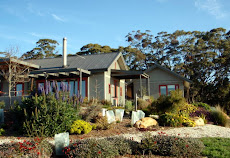
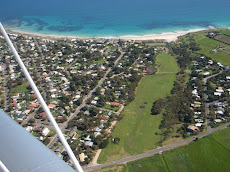



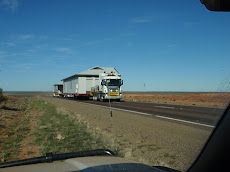



























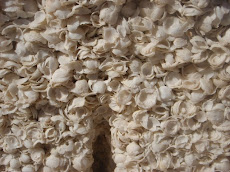



































































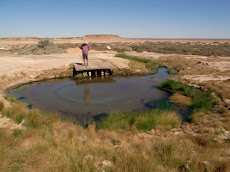











3 comments:
Hi Helen and Ian
just read your latest blog from Aug 22. It sounds and looks like you're having a great time.
The weather looks nice and warm unlike Woodend as we had a nice cover of snow last Friday morning.
The weekend was nice with the sun out again.
Don't know if you're in the mood for Rotary news but we have moved venue to The Vic and the food and venue are much better.
You have lots of nice photos and no doubt great stories to tell when you get home.
Melissa and the boys say Hi.
See you when you get home. You realise a slide night is in order.
Bye Grant
It gets better and better - when do you start heading for home? what is the ETA? why do I ask? Becca is now back with you on a oneway ticket. Visa came through. Starts the new job in Sydney on Monday. C already planning our next visit - probably end February/beginning March. Keep driving straightish ......... Love from D&C - PS great news about Andy
I was glad to read that you enjoyed the GVD experience and that you have a strong plant interest. You might like to join the Friends or meet us out there sometime. Keep an eye on our activities via our website - www.fgvd.org.au
Bill Dowling
President, Friends of the Great Victoria Desert.
Post a Comment